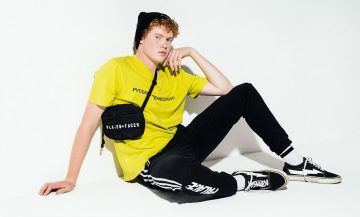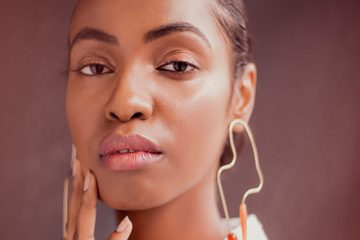The Newbie's Overview to Product Photography
If a image is worth a thousand words, a magnificent product image is worth a thousand internet site check outs. Although I don't have data to support that statement (yet), product photography can be very important to your ecommerce internet site strategy.
To reach your target audience members that choose acquiring online, you additionally need to give your target market clear, attractive photos of your products.
Yet product photography isn't as straightforward as directing as well as shooting. Even one of the most standard items require the proper tools, lights, and area to create stunning photos that sell customers right from the acquisition web page.
6 Product Photography Tips (and Instances) for Taking Photo That Offer
Below are the ideas, examples, and products you'll need to efficiently photo and also market your products in a manner that makes your site visitors and prospects want to convert.
1. Don't be afraid to use your smartphone's camera.
This is the part where I'm expected to encourage you to buy a high-end, 50-megapixel (MP) electronic camera with a 100-millimeter screw-on lens. But I'm not going to do that.
If you already own a camera that fits this summary, make the most of it. But also for numerous kinds of products, it's entirely acceptable to fire product images on a smart device.
More recent smart devices boast effective cam lenses as well as settings that enable you to optimize your shots for the various kinds of light and also environments you might fire in.
If you require much more persuading, just look into Apple's Shot On An apple iphone campaign and the images that have resulted from it over the years such as this set:
2. Shoot from a tripod for photo consistency.
Before clarifying tripods, I'm bound to start with a cardinal policy: Do not prop your phone against something durable to aim your lens toward the subject.

It's just also easy for this makeshift setup to glide around throughout the shoot and also cause inconsistencies in your pictures' appearance. If you relax your cam on, state, a pile of publications, just make sure this plan does not transform throughout the shoot.
There's no damage in holding your camera on your own when firing simply a few product pictures for your ecommerce internet site. But as your service grows, and you take more photos of more products, it can be tough to standardize the product's orientation in each photo when firing handheld.
To make certain consistency across your products, you'll require a tripod. As well as the good news is, buying one isn't always the big, industrial-sized investment it made use of to be.
Below are 2 types of tripods to consider.
Traditional vs. Versatile
This is a custom tripod-- there are typical tripods available for both video cameras and also smartphones.
A flexible tripod can be adjusted in a number of methods. You can flex its legs and also put it on different surface areas to get the angle you require.
Mobile Grip
There's usually a screw on the top of your tripod which connects to your video camera to hold it in position. The underside of many professional-grade cams has a screw hole just for this purpose, however smart devices can utilize the following adapter:
The adapter holds the sides of your mobile phone as well as can screw into either kind of tripod, allowing you to operate the video camera regulates with the phone display dealing with external as well as towards you.
When you establish which install you'll require, set it up in front of your product, and also take into consideration putting 3 pieces of tape on the ground to mark where you wish to maintain each leg of your tripod over the course of the shoot.
3. Select natural light or synthetic light.
Never ever undervalue how particular types of light can improve (or hinder) your product photography. Bear in mind, customers obtain the very best look at an item in person, where they can see whatever they need to before buying. The ideal lights plan assists you reveal those essential decision-making product attributes when all web site site visitors have to go on is a photo.
A solitary lights setup might not help every product-- a lights arrangement that Target Audience Imagery works for some items might weaken the appearance of others.
There are 2 sorts of light you can pick as your major light: all-natural as well as synthetic light.
Natural Light
Natural light refers to sunshine-- basic as that. It's additionally referred to as "soft light" since the sun casts a bigger, softer series of light than, say, a light beaming straight on the product. Ecommerce product shots thrive in all-natural light if:
The product is shot outside or indicated to be utilized outside.
The product is utilized by, worn on, or shot with a individual ( individuals tend to look better in all-natural light).You're trying to highlight the product's environments, as opposed to specific qualities of the product.
Below's an example of a shot making use of all-natural light:
Artificial Light
Artificial light consists of candle lights, fire, and a lot more frequently, light bulbs. It's likewise described as " tough light" because it produces a smaller however extra concentrated light surface area. This kind of light satisfies products with physical information that need to be highlighted to impress an on the internet buyer.
As a general policy, stick to simply one sort of light per photo-- natural or man-made. Adding all-natural light to an artificially lit photo can soften a product that's suggested to festinate, and adding artificial light to a normally lit photo can hone a product that's meant to look soft. You do not want to enter your own means.
4. Fill up or bounce your light to soften darkness.
Whether you utilize natural light or synthetic light, you'll require to minimize the shadows that any prospective tough light casts on the opposite end of a product.
There are three means to do this:

Load Light
Include an additional, less-intense light source to supplement your main light. This additional light is called your fill light and is used as a counterbalance to soften the all-natural shadow your primary light produces behind an item.
To do this, place your fill light opposite your primary light so your product rests in between both light sources.
Flashbulb Bounce Card
A bounce card, or reflector card, is a tiny card that " shows" or " jumps" the primary light back onto the surface area below your product to decrease darkness.
Some bounce cards attach to the flashbulb of a expert cam lens to diffuse the light from the video camera's flash. This card sprinkles a softer light onto the subject from over your set-- as opposed to directly at it-- so you do not have lengthy darkness trail behind the item you're firing.
Standalone Bounce Card
If you're shooting from a mobile phone, a flashbulb bounce card isn't an choice, considering that you don't have a physical flash you can affix it to. Rather, make your own standalone bounce card positioned opposite your main source of light.
For newbies to product photography, this bounce card can successfully change your fill light, which counters the tough light from the camera flash or lamp that's facing toward the front of your product.
5. Use a sweep or picture setting to stress the product.
There isn't one right method to position your product, lights, and also jump cards-- they can change dramatically depending on your background. But do not select a history based on what's most convenient to create. Backgrounds must look like how you desire your buyers to view your product when viewing it online.
Take into consideration first whether you would certainly like a white history or a more vibrant, real-world history. There's an easy way to achieve each one.
White History: Sweep
For white backgrounds, it's not as easy as establishing a table versus white drywall. Also smartphone cameras can grab little blemishes on a white wall surface that you wouldn't notice with the nude eye. To capture a best white history without edges or acnes, make use of a sweep.
A sweep is a huge flexible sheet of paper, whose bottom serve as the surface underneath your product and then curves up into a white wall surface behind the product.
On cam, the sweep's contour is unnoticeable, stressing key product details and also enabling the product to have all of a website visitor's interest.
Real-World Background: Picture Mode
Dynamic, real-world histories are really appealing when capturing items that have a particular usage or are being modeled by a person-- as you saw in the picture of the briefcase previously in this overview.
However, it's easy for a real-world history to steal the emphasis of the photo, making it uncertain which product in the photo you're really marketing.
Give your product deepness as well as emphasis with portrait mode, a picture setup on a lot of expert video cameras, as well as additionally readily available on many brand-new smart devices. This setup obscures the history so the context of the product is clear but not contending versus the product itself.

6. Fire a variety of images.
My last ecommerce photography suggestion to you is to not stop at one photo per product. Just as your consumers look, hold, make use of, and also even try on goods in a shop, your website ought to fire a variety of pictures to simulate this extremely experience.
If you're shooting clothing, for instance, capture the garment of apparel alone-- that is, spread out on a white surface area-- in addition to on a mannequin whose shade contrasts the color of the product.
Then, for additional images, have the garments modeled on a individual, permitting you to https://controlc.com/b18cc0c0 take images of the product from the person's various poses and also angles.
Product Photography Set Up
Next off, allow's summarize what we simply got-- here's a checklist of quick product photography set-up suggestions that you can describe and share on your group:
• Pick a video camera-- whether that suggests using your smart device.
• Obtain a tripod that helps your electronic camera of choice.• Choose all-natural or synthetic lights-- think of which choice is best for your product and setting.
• Determine whether you'll fill or jump light.• Select move or portrait setting.
• Take several various images to use your visitors range.
Get going With Your Product Photography
Don't really feel obligated to buy every suggestion and also tool at once. Apply these product photography tips progressively to see what makes your store look one of the most presentable, as well as transform your strategy as your photography chops get better.